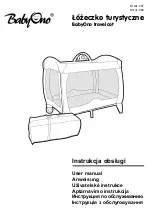
Page 10 Hybrid Coupler Installation and Operations Manual
Technical or Setup Assistance
Telephone: 800.945.7730 (USA) or 801.975.7200 (worldwide) • Worldwide Web @ http://www.gentner.com
To better understand the application of Gentner telephone products, it is helpful
to obtain a basic understanding of the telephone system.
The telephone company provides a single pair of wires for every telephone line
within the service area of the Central Office (CO). The pair of wires are twisted to
form a balanced transmission line. This twisting of two identical wires provides
for the rejection of hum and noise on the telephone line. This single pair of wires
provides simultaneous transmission of both send and receive audio, DC current to
power the user’s telephone, and ringing voltage signals. The diagram below
(Figure 14) is a schematic of the subscriber interface circuit at the CO.
Appendix A: Telephone
Theory
The two wires coming from the CO are called tip and ring. These names carry
over from the days of the old manual switchboard when an operator manually
interconnected callers with patch cords. The tip and the ring terminals of the plug
on the patch cord provided the connections to the caller’s telephone. It is very
easy to identify tip and ring using a standard voltmeter; as Figure 14 indicates,
tip is positive and ring is negative. The open circuit voltage on the telephone line
is 48V.
When a telephone handset is taken off hook, current is drawn from the CO
battery, closing the contacts of K1. These contacts tell the CO switching
mechanism that the user demands service. The switch then provides dial tone and
waits for the user to dial a number. If an incoming call is to be directed to a user,
the CO switch will operate K2 and apply 90V (RMS) at 20Hz to tip and ring.
This voltage now superimposed on the 48Vdc will cause the user’s instrument to
ring. When the called party takes the instrument off hook, K1 will close and the
switch will interconnect the two parties.
Figure 15 (below) shows what the ideal telephone line looks like (simply two
conductors between the user and the CO) compared to the actual telephone line.
Figure 14. Subscriber interface circuit schematic
Any wire conductor has a small amount of resistance and inductive reactance. As
we increase the length of this conductor beyond 100 feet, these two components
begin to have significant effects at audio frequencies. In addition, two of these
conductors are twisted together, creating a significant amount of shunt
Figure 15. Ideal telephone line




































